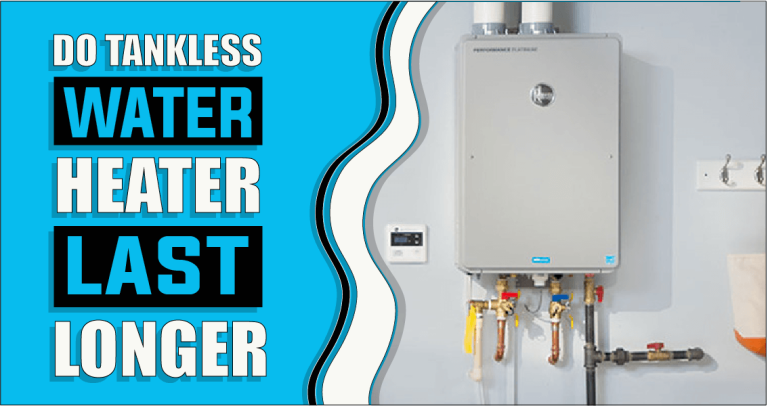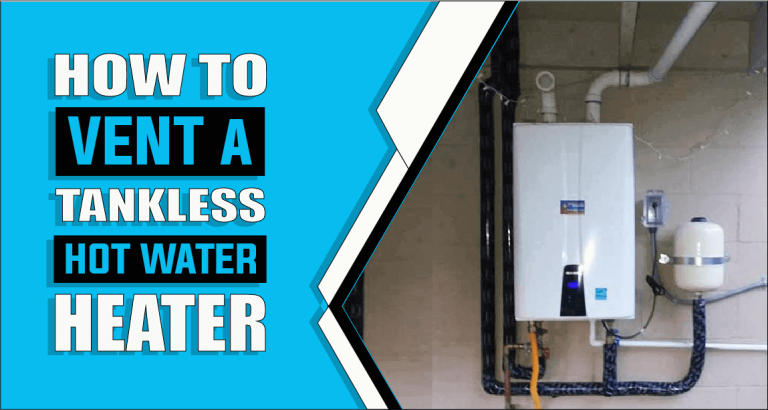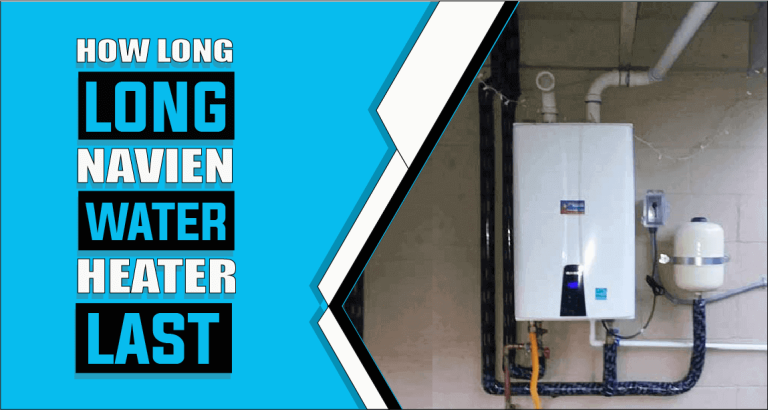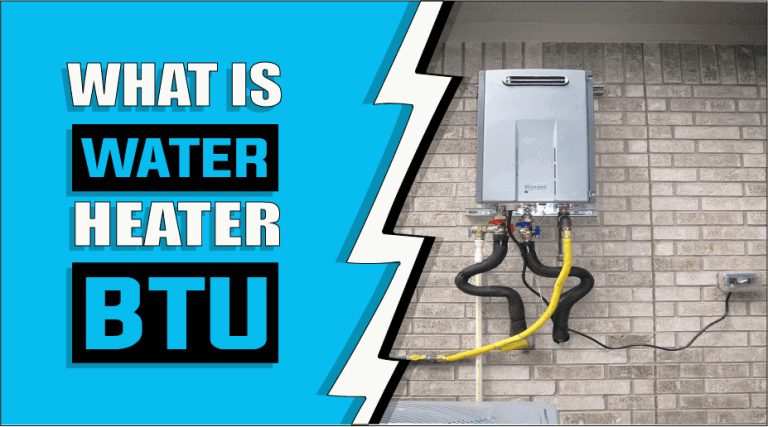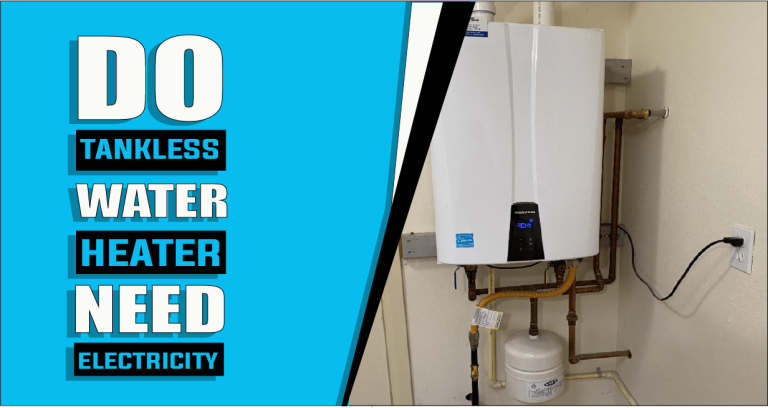What GPM Tankless Water Heater Do I Need | Determining Your Perfect Match?
Selecting the suitable GPM (Gallons Per Minute) tankless water heater is a critical decision for homeowners seeking to optimize their hot water supply. Traditional water heaters store hot water in a tank, leading to energy waste and limitations on available hot water. In contrast, tankless water heaters provide hot water on demand, but determining the appropriate GPM capacity is paramount. This decision hinges on various factors, including household size, climate, simultaneous fixture usage, and personal temperature preferences. In this exploration of “What GPM Tankless Water Heater Do I Need,” we delve into the intricacies of GPM calculations, helping you make an informed choice to meet your specific hot water requirements efficiently and economically. No more talk; let’s have a look!

Understanding GPM (Gallons Per Minute)
Understanding the GPM (Gallons Per Minute) for a gas water heater is essential for optimizing your hot water supply. GPM represents the flow rate of hot water the heater can deliver, ensuring you have enough for all your fixtures and appliances.
For gas water heaters, GPM is influenced by the heater’s size, energy source, and temperature rise capability. The size of the heater, typically measured in BTUs (British Thermal Units), determines its heating power. A higher BTU rating equates to a larger GPM capacity, allowing for a more significant flow of hot water.
The energy source, natural gas or propane, affects the heater’s performance. Gas units tend to have higher GPM compared to electric ones. However, the exact GPM capacity varies between models and brands, so checking the product specifications is crucial.
Additionally, GPM for a gas water heater is influenced by the temperature rise required. In colder regions, where the groundwater is colder, the heater must work harder to achieve the desired hot water temperature, which can impact the GPM rate.
What GPM Tankless Water Heater Should You Buy: Sizing guidelines and adjustments
Sizing guidelines and adjustments for gas water heaters are essential to ensure optimal performance and efficiency. To determine the right size, consider the number of household members, the peak hot water demand, and climate conditions.
In colder regions, where the incoming water temperature is lower, adjustments must be made to accommodate the increased heating demand. Selecting a gas heater with a higher BTU (British Thermal Unit) rating or a larger storage capacity can help meet these requirements.
Assess the heater’s Uniform Energy Factor (UEF) and First Hour Rating (FHR) for more precise sizing. The UEF indicates its energy efficiency, while the FHR estimates how much hot water it can deliver during peak usage.
Proper sizing and adjustments for gas water heaters will provide adequate hot water, reduce energy consumption, and save on utility costs, making it a crucial consideration for homeowners.
Types of GPM Tankless Water Heaters
Types of GPM (Gallons Per Minute) tankless water heaters vary to cater to different needs and preferences, offering homeowners versatility in selecting the ideal unit for their specific requirements.
1: Point-of-Use vs. Whole-House Units –
Point-of-use tankless heaters are compact and designed to serve a single fixture, such as a sink or shower. They are space-saving and energy-efficient for localized hot water needs. On the other hand, whole-house tankless heaters are larger and capable of supplying hot water to the entire home, making them suitable for households with multiple fixtures and higher GPM demands.
2: Electric vs. Gas Tankless Water Heaters –
Electric tankless heaters are smaller and easier to install, ideal for smaller households or as point-of-use units. Gas tankless heaters are more powerful and suitable for whole-house applications, making them preferable for larger families or homes with high GPM requirements.
3: GPM Range for Various Models –
Tankless water heaters are available in a range of GPM capacities, typically from 2-8 GPM for electric units and 6-10+ GPM for gas units. The specific GPM range you choose should align with your calculated hot water needs, considering the number of fixtures and appliances used simultaneously.
Factors Affecting GPM Requirements
Remember that factors affecting GPM (Gallons Per Minute) requirements for tankless water heaters are multifaceted and critical when selecting the suitable unit for your home. Understanding these factors ensures a seamless and efficient supply of hot water.
1: Climate and Incoming Water Temperature –
In colder regions, the groundwater temperature is lower. As a result, the tankless heater must work harder to heat water to the desired temperature, necessitating a higher GPM rating. Conversely, the GPM requirement may be lower in warmer climates due to the higher initial water temperature.
2: Desired Hot Water Temperature –
Your preferred hot water temperature impacts GPM. If you require scalding-hot water, the unit may need to operate at a lower flow rate to achieve the desired temperature, affecting the GPM capacity.
3: Number of Fixtures and Appliances –
The more fixtures and appliances connected to the tankless heater, the higher the GPM requirement. Simultaneous use of multiple fixtures can strain the unit’s capacity, requiring a higher GPM rating.
4: Peak Hot Water Demand –
Identifying peak usage times is crucial. If your household has multiple occupants using hot water simultaneously during mornings or evenings, the GPM requirement should accommodate these peak demands.
5: Water Flow Consistency –
Variations in water flow consistency across fixtures and appliances can affect GPM requirements. Ensuring even flow and pressure is essential for optimal performance.
Installation Considerations
If you’ve decided to buy a GPM tankless water heater, you must follow some installation considerations so you don’t push yourself into a never-ending battle with the wrong steps. Keep the following things in mind while installing the GPM heater:
1: Venting Options –
Gas water heaters require proper venting to expel exhaust gases. Ensure compliance with local building codes when selecting the venting type, which could be conventional or direct-vent. Adequate venting is vital to prevent carbon monoxide buildup.
2: Gas Supply –
Confirm that your gas supply line is appropriately sized and capable of providing the required gas flow rate for the heater. Consult a professional if upgrades or adjustments are needed.
3: Location and Space –
Choose a well-ventilated area for installation. Adequate space is essential for maintenance and service access. Consider the unit’s clearance from walls and flammable materials to ensure safety.
4: Combustion Air –
Gas water heaters require combustion air for proper operation. The location should allow for the inflow of fresh air while adhering to ventilation requirements.
5: Gas Line Connections –
Gas lines must be correctly installed, leak-tested, and equipped with shut-off valves. Professional installation is advisable for gas line connections.
6: Flue and Draft Diverter –
Ensure the flue is correctly aligned and installed to vent combustion gas properly. A draft diverter or hood should also be in place to ensure safe ventilation.
7: Pressure Relief Valve –
The pressure relief valve should be correctly installed and piped to a safe discharge point, as it is crucial for preventing excess pressure and temperature.
8: Thermal Expansion –
Consider the installation of a thermal expansion tank to manage water pressure fluctuations and prevent damage to the unit.
9: Permits and Codes –
Comply with local building codes and secure any required permits for the installation. Hiring a licensed professional can help ensure adherence to these regulations.
Common Mistakes to Avoid
Avoiding common mistakes when dealing with gas water heaters is essential to ensure the unit’s safety, efficiency, and longevity. Below are some critical missteps to steer clear of:
1: Improper Sizing –
One of the most common errors is choosing the wrong-sized unit. An undersized heater may struggle to meet hot water demand, while an oversized one can lead to energy waste. Calculate your GPM needs accurately to determine the correct size.
2: Neglecting ventilation –
Poor ventilation can result in the buildup of carbon monoxide gas, which is extremely dangerous. Ensure your gas water heater is correctly vented, adhering to local building codes and safety standards.
3: Incorrect Gas Line Installation –
Professionals must make gas line connections to prevent leaks and potential hazards. A certified technician should handle gas line installations.
4: Inadequate Maintenance –
Failing to perform regular maintenance can lead to performance issues and early breakdowns. Flushing the tank, checking the pressure relief valve, and inspecting the anode rod are essential maintenance tasks.
5: Ignoring Safety Devices –
Gas water heaters have safety devices, including pressure relief valves and temperature controls. Neglecting these can lead to overheating, excessive pressure, and potential safety hazards.
6: Poor Installation –
Ensure the water heater is correctly installed, including proper clearances from walls and combustible materials. Incorrect installations can lead to inefficiencies and safety concerns.
7: Neglecting Local Codes and Permits –
Failing to adhere to local building codes and secure the necessary permits for installation can result in costly fines and potential safety issues.
8: DIY Repairs –
Attempting to repair or modify a gas water heater without professional training can be dangerous. Gas appliances should only be serviced by qualified technicians.
By avoiding these common mistakes, you can enjoy the benefits of a safe and efficient gas water heater, providing reliable hot water for your home while minimizing safety risks and energy wastage.
Conclusion:
In conclusion, determining what GPM tankless water heater I need is a crucial decision that hinges on many factors. From household size and climate conditions to peak hot water demand and personal temperature preferences, the complexities of this decision are evident. A thorough assessment of your unique requirements is essential to make the right choice. Understanding the relationship between GPM, water flow, and temperature is paramount to ensure a seamless and efficient hot water supply. Avoiding mistakes such as incorrect sizing and overlooking safety measures is equally critical. Moreover, balancing the initial investment with long-term savings is a wise approach, considering the energy efficiency and durability of the gas water heater.
Relevant Questions
Tankless water heaters can be suitable for larger families, but selecting the proper size is critical. It’s possible to meet high GPM requirements with whole-house units or by installing multiple tankless units in parallel.
Oversizing a tankless water heater can be counterproductive. It may result in frequent on-off cycling, reducing efficiency and causing wear and tear. Choosing a unit that closely matches your calculated GPM needs is essential.
To determine if you’ve selected the correct GPM, monitor the performance of your tankless water heater during regular use. You’ve likely chosen the proper size if it consistently meets your hot water needs without running out. If not, you may need to consider upgrading or adding units.
Consulting with a licensed plumber or HVAC specialist is highly recommended. They can assess your specific needs, the climate in your area, and the appropriate unit size, ensuring you choose a tankless water heater that matches your requirements.
The minimum GPM required for a tankless water heater to operate efficiently varies by model, but it’s typically around 0.5 GPM to 0.8 GPM. Some units have advanced low-flow activation features to accommodate lower flow rates.
Ella John is passionate about helping her readers make the best choice when purchasing a heater. She understands that selecting a heater can be difficult and strives to provide information to help make the decision easier. Ella’s website, Heatersinfo.com, provides valuable insight into heating trends and types of heaters and tips on how to care for them. She also advises selecting the right heater based on individual needs and preferences. Her expertise in electronics makes her an excellent source of knowledge, and she is confident that anyone who visits her website will find the perfect heater information for their needs. Ella’s dedication to helping others make educated decisions about buying the right heater is unparalleled, and she hopes to continue offering her expertise for many years. With Ella’s help, finding the perfect heater can be a breeze!

